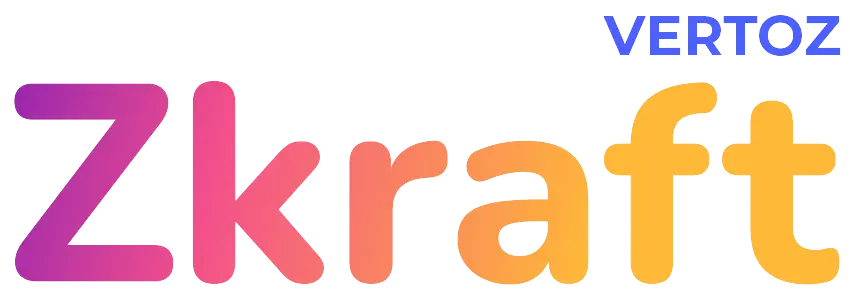We’re living in a day and age where language models (LLMs) are doing their job and doing it right. They write, reason, summarize, and go as far as even code at scale, while quietly sitting behind every coherent output – prompt engineering. It may sound complex, but it’s a simple act of asking the right question with as much clarity as possible. If you’ve marveled at how an AI system works, you’re already witnessing prompt engineering at its best.
Let us tell you, this isn’t trial and error or guesswork. This isn’t even about typing random commands until you get lucky. It’s the sheer discipline that makes it all happen. Prompt engineering is an emerging art – a mix of linguistic nuance, product design, and behavioral science. It’s about designing input with strategic clarity so AI doesn’t just respond but responds intelligently.
Let’s unpack what this really involves, where it’s being used, and why everyone, from software developers to marketers should be paying close attention.
So, What Exactly Is Prompt Engineering?
At its core, prompt engineering is art of structuring inputs for AI systems that, in some way, guides them to generate the most accurate, useful, and creative output.
In simple words, your prompt is your instruction and the way you frame it and put it forward will determine how well the final results are
In simpler terms, your prompt is your instruction. The way you frame it determines how well the AI interprets it.
This could mean:
- Giving simple and generic instructions like, “Summarize this article.”
- Design a detailed task like, “Write a 150-word article on the topic, using a neutral tone.”
- Walking AI through examples and actually showing them what has to be done.
If done well, prompt engineering makes a model smarter, not because the model changes, but because your interaction with it becomes more intelligent. It obviously helps reduce work load, and opens up your mind to concentrate and focus on things that are much bigger and more important.
Let’s Break Down the Elements of an Effective Prompt
Sure, it may sound easy. All you really have to do is give instruction, and what’s the big deal about that? Well, it’s safe to say it’s tougher than it sounds. Designing a prompt isn’t based on assumption, but it has a system that needs to be followed. Here are the building blocks:
Prompt Format
It all starts with the way you deliver a certain prompt, because different formats trigger different behavior. For example:
- Questions provoke exploration.
- Commands lead to direct execution.
- Bullet structures can help AI output lists.
You’re essentially designing a behavioral cue. The better the format fits the task, the sharper the output. So, make sure, you know exactly what you want, because only then will you be able to extract the best.
Context
AI is a robot at the end of the day, so it doesn’t think like a human. Sure, it is designed to make things easier, but it’s you who needs to feed in the right context. AI doesn’t “know” your intent unless you spell it out and here specific context helps. For an instance:
- Instead of “Write a product description,” Try “You’re an e-commerce copywriter. Write a 50-word product description for a luxury leather backpack, targeting millennial professionals.”
Be extremely specific about what you want, and that will help you maximize the output whilst putting in minimum effort.
Examples
In AI prompting, examples act as a savior because you’re not asking the model about what has to be done, but you’re actually showing it. This especially is very powerful when the output requires a specific format, tone, or structure. Let’s compare and see what difference it makes:
Prompt without examples: “Generate a customer review for a new electric scooter.”
AI response: “The scooter is good. It’s fast and works well. I would recommend it.”
Sure, it is decent and helps you a little. But it’s still very generic and underwhelming.
Prompt with example: This is a review I heard about a smartwatch “I’ve been using this smartwatch for two weeks and I’m really impressed. The step counter is accurate, the battery lasts over 3 days, and it syncs seamlessly with my phone. Highly recommend it if you’re tracking fitness.” I want you to help me with the electric scooter’s review.
AI response: “I bought this electric scooter last month and it’s been a game-changer for my daily commute. It charges quickly, handles rough roads well, and has a surprisingly smooth acceleration. Great for anyone looking to avoid traffic.”
You see the difference? The model now “knows” what a strong review looks like and mirrors the structure, tone, and content style. This is the impact of examples.
Clarity
Let’s understand this: if ambiguity confuses humans, it’s almost impossible for an AI to decode it. Large language models don’t have intent so they don’t know what you meant unless you say it plainly. The more precise you are with your wording, the less room there is for misinterpretation.
Here’s what we mean by clarity:
- Instead of saying, “Write about solar,” say, “ Write a 200-word post introducing homeowners to solar panel installation, explaining how it saves energy and reduces long-term costs.”
Clarity isn’t about using big paragraphs but it’s about reducing the chance of confusion.
Types of Prompting You’ll See in Practice
Prompt engineering isn’t one-size-fits-all. Professionals use different prompt types based on task complexity and output needs:
| Type of Prompt | What It Is | Example |
|---|---|---|
| Zero-Shot | No examples. Directly ask the model. | “List three benefits of cloud computing.” |
| One-Shot | One example before the real prompt. | Show how to format a bio, then ask the model to write one. |
| Few-Shot | Multiple examples to guide behavior. | Input-output pairs before the real task. |
| Chain of Thought | Ask the AI model to reason step-by-step before outputting final result. | “Explain your reasoning step-by-step before giving the final answer.” |
| Zero-Shot CoT | Combine zero-shot with a request for stepwise reasoning. | “Solve this math problem step-by-step: (23×12)+8.” |
Each has its place. The magic lies in knowing when to use which and how to tweak it when results fall short.
Where Prompt Engineering Is Making a Measurable Difference
There are so many industries and sectors that could use prompt engineering to make things easier and lessen the burden. And sure enough, it has already been applied in many. Here’s how:
- Customer Service – Designing AI responses for chatbots that adapt tone based on sentiment.
- Legal Drafting – Turning legal clauses into structured input-output formats.
- Marketing – Prompting for tone shifts, A/B copy, campaign headlines, or regional translations.
- Healthcare – Designing intake forms, summaries, or even guiding diagnostic Q&A sessions.
- Education – Creating dynamic quizzes, learning paths, or subject-based explanations for varied age groups.
Prompt Engineering Doesn’t Come Without Challenges
Needless to say, prompt engineering is incredibly effective and helpful. But, despite all the benefits, prompt engineering isn’t foolproof.
- No Standardization: What works for GPT-4 may flop in Gemini or Claude.
- Model Biases: You may write a clean prompt, but the model might still inject subtle bias or errors.
- Iterative Learning: There’s no final form. You’re always adjusting based on use case, context, and model updates.
- Hidden Dependencies: Small format changes, like using quotes vs. not can dramatically alter responses.
Where It’s Headed
We’re entering the age where prompt engineering will likely evolve into its own job function or at the very least, become a foundational skill across functions.
We can expect to see:
- AI prompt libraries for reusable formats
- Tools that auto-optimize prompts for task types
- New job titles: “Prompt Strategist,” “LLM Experience Designer,” etc.
- Product interfaces where prompts are abstracted into toggles or presets
It’s scaling and how, and we don’t see a stop to it anytime soon.
Final Thoughts
Prompt engineering is to modern AI what UX design was to early web interfaces: not optional, but essential. It sits at the intersection of strategy, design, and deep technical awareness. And it’s becoming the silent differentiator behind which tools outperform others.
If you care about AI accuracy, impact, and innovation, then start paying attention to your prompts. Because the model’s output is only as smart as your input.

